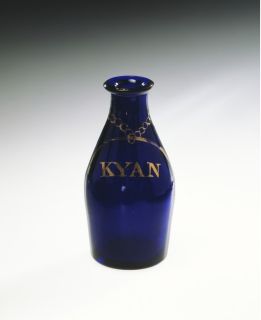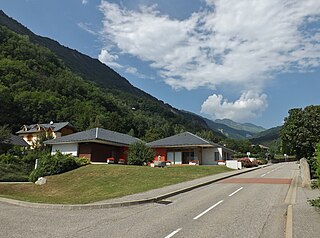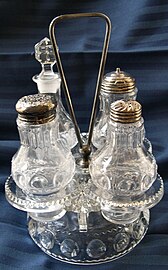
An intermodal container, often called a shipping container or ISO Container, is a large standardized container designed and built for intermodal freight transport, meaning these containers can be used across different modes of transport – from ship to rail to truck – without unloading and reloading their cargo. Intermodal containers are primarily used to store and transport materials and products efficiently and securely in the global containerized intermodal freight transport system, but smaller numbers are in regional use as well. These containers are known under a number of names. Based on size alone, up to 95% of intermodal containers comply with ISO standards, and can officially be called ISO containers. Many other names are simply: container, cargo or freight container, shipping, sea or ocean container, container van or sea van, sea can or C can, or MILVAN, SEAVAN, or RO/RO. The also used term CONEX (Box) is a technically incorrect carry-over usage of the name of an important predecessor of the international ISO containers, namely the much smaller prior steel CONEX boxes used by the U.S. Army.

A container ship is a cargo ship that carries all of its load in truck-size intermodal containers, in a technique called containerization. Container ships are a common means of commercial intermodal freight transport and now carry most seagoing non-bulk cargo.

A box is a container used for the storage or transportation of its contents. Most boxes have flat, parallel, rectangular sides. Boxes can be very small or very large and can be used for a variety of purposes, from functional to decorative.

A flagon is a large leather, metal, glass, plastic or ceramic vessel, used for drink, whether this be water, ale, or another liquid. A flagon is typically of about 2 imperial pints (1.1 L) in volume, and it has either a handle, or one or two rings at the neck. Sometimes the neck has a large flange at the top rather than rings. The neck itself may or may not be formed into one, two or three spouts. The name comes from the same origin as the word "flask".

A pyx or pix is a small round container used in the Catholic, Old Catholic and Anglican Churches to carry the consecrated host (Eucharist), to the sick or those who are otherwise unable to come to a church in order to receive Holy Communion. The term can also be used in archaeology and art history to describe small, round lidded boxes designed for any purpose from antiquity or the Middle Ages, such as those used to hold coins for the Trial of the Pyx in England.

A cruet, also called a caster, is a small flat-bottomed vessel with a narrow neck. Cruets often have a lip or spout and may also have a handle. Unlike a small carafe, a cruet has a stopper or lid. Cruets are normally made of glass, ceramic or stainless steel.

A ciborium is a vessel, normally in metal. It was originally a particular shape of drinking cup in Ancient Greece and Rome, but the word later came to refer to a large covered cup designed to hold hosts for, and after, the Eucharist, thus the counterpart of the chalice.

A lavabo is a device used to provide water for the washing of hands. It consists normally of a ewer or container of some kind to pour water, and a bowl to catch the water as it falls off the hands. In ecclesiastical usage it refers to all of: the basin in which the priest washes their hands; the ritual that surrounds this action in the Catholic Mass; and the architectural feature or fitting where a basin or place for one is recessed into the side wall of the sanctuary, or projects from it. If this last includes or included a drain, it is a piscina used for washing the church plate and other fittings, though the terms are often confused. In secular usage, it is an obsolete term for any sink or basin for washing hands, especially in a lavatory.

A paten or diskos is a small plate, used during the Mass. It is generally used during the liturgy itself, while the reserved sacrament are stored in the tabernacle in a ciborium.

Salt and pepper shakers or salt and pepper pots, of which the first item can also be called a salt cellar in British English, are condiment dispensers used in Western culture that are designed to allow diners to distribute grains of edible salt and ground peppercorns. Salt and pepper shakers are sometimes held in a cruet-stand.
The Clayburn Pottery was an English pottery works based in Milner St, Hanley, Stoke-on-Trent.

Azzana is a commune in the Corse-du-Sud department on the island of Corsica, France.

Notre-Dame-du-Cruet is a commune in the Savoie department in the Auvergne-Rhône-Alpes region in south-eastern France.

Cruet is a commune in the Savoie department in the Auvergne-Rhône-Alpes region in south-eastern France.

Rafael Marquina i Audouard was a recognized Catalan designer and architect. He created the non-drip oil cruet that, apart from the lovely design, is highly practical, i.e. it doesn't drip or get dirty.

A chorreador is a coffee making device used in Costa Rica in which hot water leaches through coffee grounds held in a cloth filter mounted on a wooden stand, then drips into a container.
Kubernetes is an open-source container orchestration system for automating software deployment, scaling, and management. Originally designed by Google, the project is now maintained by the Cloud Native Computing Foundation.

A sugar caster is a small container, with a perforated top, larger than a salt shaker but similar in form. The sugar caster was part of a set of vessels, and a rack to hold them used to contain spices and condiments on the dining table. The set would have a salt shaker, a pepper shaker, a vinegar cruet, an oil cruet, a sugar shaker, and a mayonnaise jar with spoon. The word is first attested to in 1676.

An altar cruet or mass cruet is a small jug used in mass to carry the water or wine that are used in the consecration. The current cruets have replaced the old amphoras that, with the name of hama or amula, were used to receive and carry the chalices of the wine that the faithful offered at Mass. Often they were richly decorated metal jugs. Others were made of glass or clay. The reduced form of the present cruets dates, at least, from the 12th century.




















